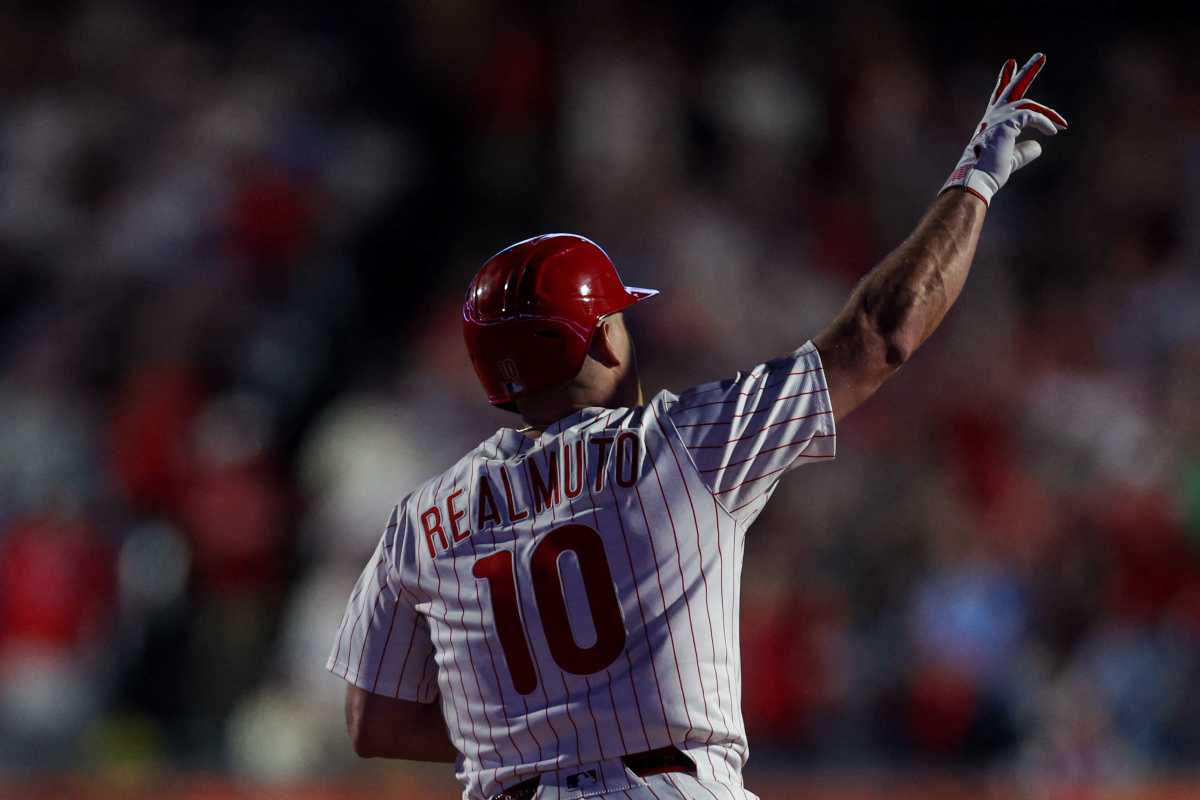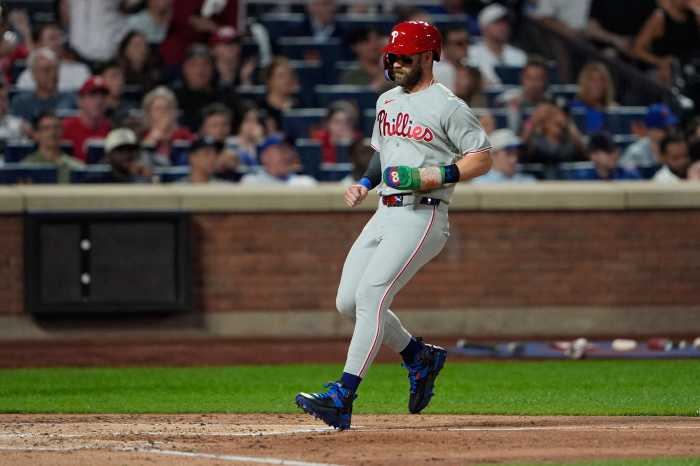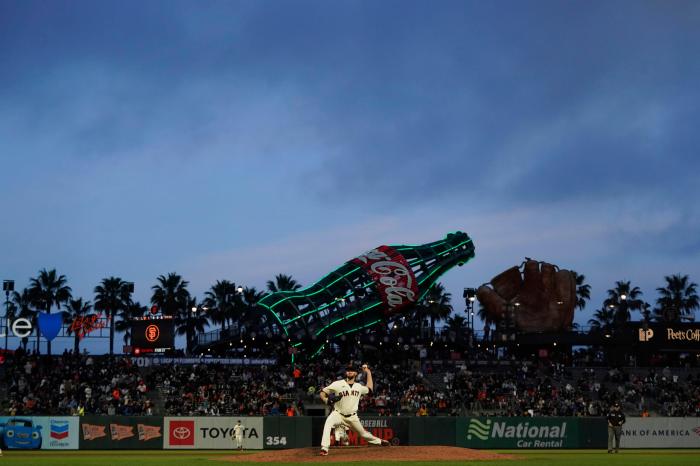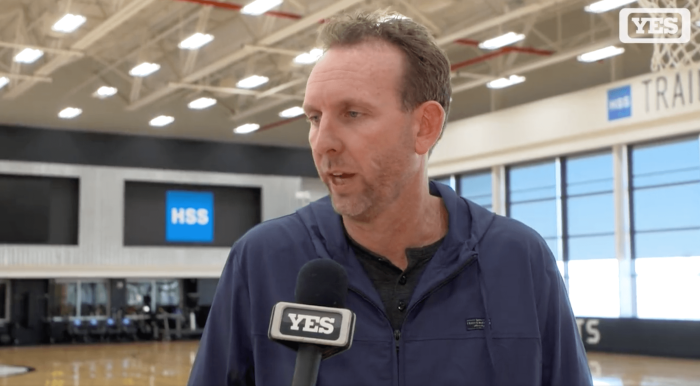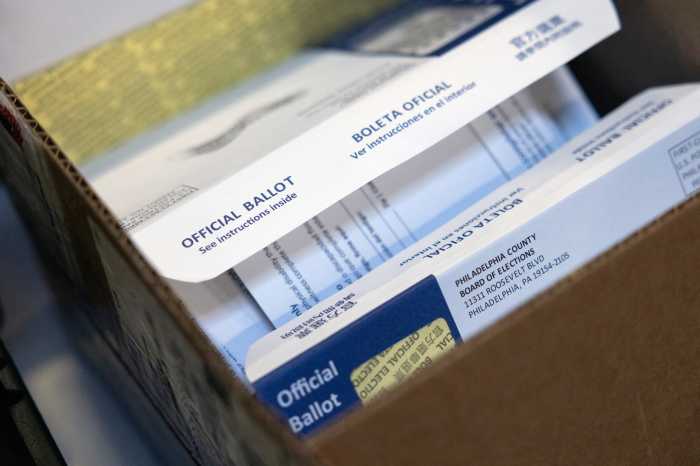The Phillies took two games out of three against the Washington Nationals to kick off their most recent homestand. And while the result has been mostly positive, there is a disturbing trend forming in the Phillies’ late-inning decision-making process on the field. Though these plays ended up providing minimal damage to the team overall, a trend is forming where the team is abandoning traditional baseball logic in split-second decisions on the field.
Turner Does Not Execute on a Double Play
We begin our reflection on Tuesday night, in the top of the eighth inning. The Phillies own a 3-2 advantage over the Nationals. Jose Alvarado allowed back-to-back singles to Amed Rosario and Keibert Ruiz to start the inning, putting him a tough position with runners on first and third with no outs.
Alvarado fires a 99.8 mph sinker down the middle against Nathaniel Lowe. Lowe hits the ball up the middle, two steps to the left of Trea Turner. Going with his momentum, Turner goes to tag second base and initiate a double play. At the same moment, Rosario begins to break for home from third. Turner immediately plants his foot in front of second base and throws the ball home to prevent Rosario from scoring. Rosario immediately retreated to third base, leaving the bases loaded for the Nationals. Originally called an error on Turner, this play was rightly changed to a fielder’s choice after the fact.
Had Turner continued on with his first read and completed the double play, he would have allowed the game-tying run to score in exchange for a double play ball, leaving no runners on base and two outs. While this gives up the lead, it cuts off the Nationals from making any additional rally on the inning, giving the Phillies six outs to score a go-ahead run to seal the deal. Luckily, the forever-caffeinated Jose Alvarado struck out the side to work himself out of the bases loaded jam instead.
Rojas Fails to Execute on a Double Play
One inning later, the Phillies have added two runs to their lead, now sitting 5-2 over the Nationals. With one out and C.J. Abrams on first base for the Nationals, James Wood is up at the plate with a 3-2 count against Orion Kerkering.
The Nationals decide to be aggressive on the base path with their young shortstop, putting on a hit-and-run call. With Abrams in motion on the pitch, Wood slings a low-hanging line drive into left field destined for the newly dubbed “Monty’s Angle.” Johan Rojas picks up immediately on the fact that Abrams is already nearing second base and did not tag up. If Rojas can make the catch with enough forward motion, he can easily double-up Abrams at first base to end the game.
The issue is, with Rojas stepping in to make the play, the line drive drops approximately six inches above his out-stretched glove. Instead of an ESPN-worthy double play ball to end the game, the ball results in an RBI-double. The end result of the inning was that the Nationals rally to score four runs off Kerkering and take a late-game lead over the Phillies.
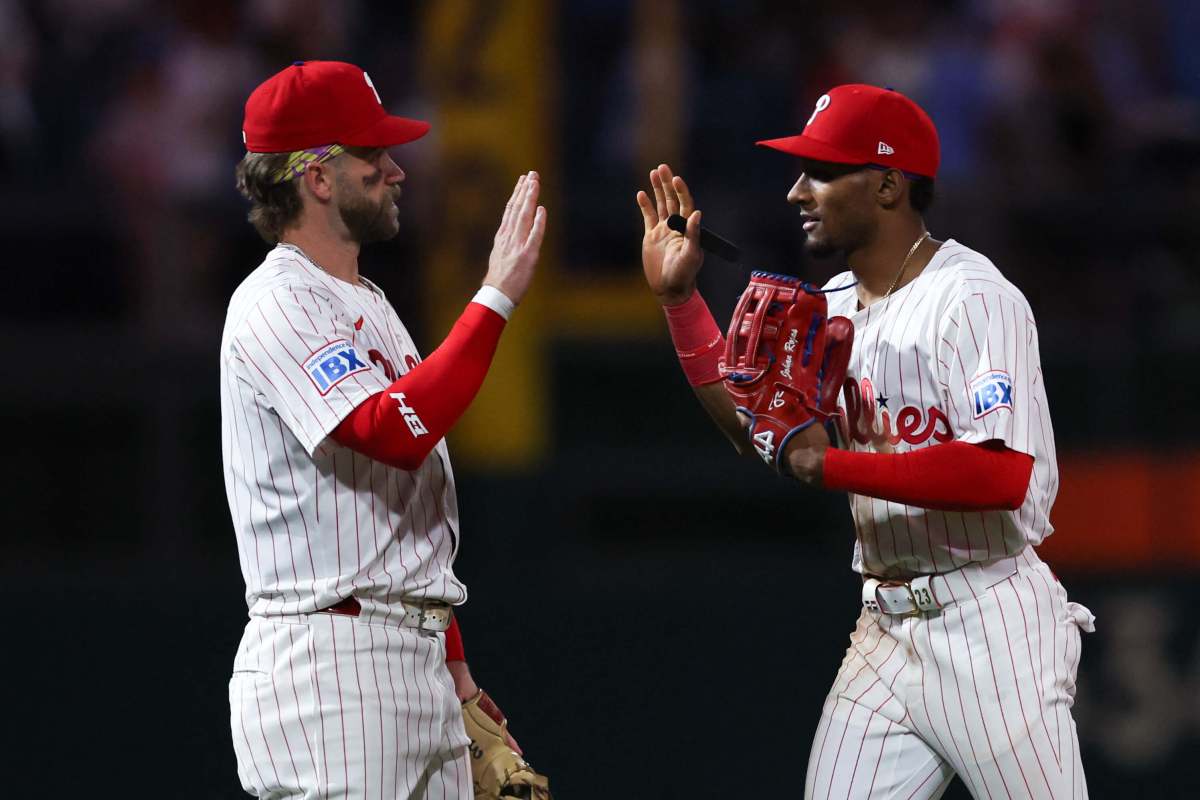
From his first read off the bat of Wood, Rojas’ decision was made. His first step for the fly ball was inward, creating a situation where all of his momentum is coming in towards the field. Outfielders are taught from an early age to always take the first step back on a fly ball, to read where it is going, and then start running in if necessary. A first step back opens the body up so that it may run backwards quickly but it leaves the window up to adjust back to running in. This simple decision alone was enough to put Rojas out of position enough to not make the catch.
Additionally, a double play was not essential to make there. Down by three runs in the top of the ninth inning, time is on your side. The priority is to get an out on the play. Had Rojas prioritized getting the out on the fly ball before worrying about doubling up Abrams, there would have been, conservatively, two outs on the inning with a runner on first base. With the Nationals down by three runs with only one out to spare, it’s unlikely their comeback remains successful.
Bohm Gets Lucky on a Misplay at Home
Instead, the Nationals took at 6-5 lead over the Phillies, putting the Phillies three outs away from opening the midweek series with a loss. With closer Kyle Finnegan on the mound for the Nationals, the Phillies quickly get Alec Bohm onto third base and Bryson Stott onto second base with one out on the inning.
Rojas steps up to the plate and pops a 2-2 fastball into right field. Dylan Crews has the time to settle under the fly ball and begins to move in, giving him momentum to throw the ball home and prevent Bohm from scoring. With a strong arm like Crews in favorable conditions to make a good throw, an average-speed baserunner like Bohm should make the decision to stay. Bohm, and third base coach Dusty Wathan, made the decision for him to run.
With Bohm running to the plate, Crews makes a throw perfectly in line to take catcher Keibert Ruiz into the basepath. Instead, Ruiz stepped in front, missed the throw, and allowed Bohm to score the game-tying run. Had Ruiz made the play, Bohm would have been the third out on the inning, resulting in a 6-5 loss to the Nationals.
Ruiz got out of the play without an error as, for scorekeeping purposes, you cannot assume a double play is to be made on that play, but Ruiz definitely left that inning not only wanting that ball back, but also the play to follow as Stott scored the walkoff run on a wild pitch that got past Ruiz.
The aggressive call to send Bohm home worked out, but it very well could have been the end of the game as well. With an extra out to work with on the inning and the top of the lineup coming up, Bohm needs to trust Turner, who was 4-for-4 on the day, to score him as he was due up next on the inning.
Rojas Gets Away with Over-Aggressive Base Running
Fast forward two days and we come to the final questionable decision of the series for the Phillies. Down 4-2 to the Nationals with two outs in the bottom of the ninth, Finnegan is making his second attempt of the series to get a save for the Nationals.
Johan Rojas slung a dribbler down the left field line. Easily making it to second base, Rojas attempted to extend it into a triple, arriving to the bag just before the throw by Wood from left field. The Nationals challenged the play, and while the call was confirmed, the Nationals had a strong argument that the diving Rojas over-slid the bag, with third baseman José Tena keeping the tag on him throughout the process.
Regardless if Rojas was safe on the play, he made an unnecessary call to extend to third base on the play. He was the first baserunner on the inning when the Phillies need at least two runs to keep the game going. Not to mention, with Rojas’ speed, any single into the outfield that would have scored Rojas from third base would likely have been enough to score him from second base as well. Instead, Rojas was inches away from ending the game for the Phillies rather than hopefully beginning a rally.

The Moral of the Story
All four of these plays for the Phillies ended up not hurting the Phillies in the end. Alvarado got out of the inning despite Turner’s misplay. Rojas’ misplay did not cost the game as they came back. Both Bohm and Rojas’ aggressive base running panned out. Regardless these four plays, the Phillies still took two games out of three from the Nationals.
The issue is: these four plays are a part of a trend for the Phillies. These plays all entail split-second decisions in critical moments of the game. We aren’t talking about statistics here but instinct. Good, ol’ fashioned baseball plays. And every time, they are making the aggressive, no holds-style play.
While the Phillies have gotten away with the all-in wagers so far, they are playing with fire. It would not be surprising, if they continue to make the aggressive decisions, for these to come back and bite them in the rear sooner rather than later.
It’s good for a team to be aggressive, but they need to be smart while doing so or it will cost them in the long-run.
Mandatory Credit: Bill Streicher-Imagn Images

